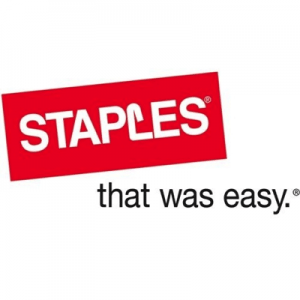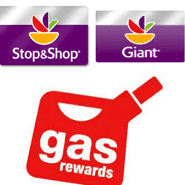This is another post in our Manufactured Monday series. We try to offer some insights into manufactured spend each Monday. You can view all posts in this series by clicking here.
Contents
MS with Discover Miles
A reader recently asked:
Any thoughts on manufacturing spend (MS) with the new Discover 3% card? Do you have any idea about how sensitive they are to MS?
Discover recently unveiled a new travel credit card called Discover IT Miles. The card earns 1.5 miles per dollar of spend on all purchases. ‘Miles’ is actually a misnomer since the points can be redeemed for cash. Each ‘mile’ is worth one penny, making the card a 1.5% cashback card.
[Read: Full Discover IT Miles Review]
The reward-level of 1.5% cashback is mediocre, since there are a few options of credit cards which offer a 2% cashback on all purchases. The main excitement about Discover Miles is the unique signup bonus the card offers: double miles for the first year. Since the card earns 1.5% cashback, the first year will yield a total cashback rate of 3% on all purchases, truly an unbeatable rate for non-bonused purchases.
This leads to the question – should we manufacture spend with Discover IT Miles? Is it worth signing up for the card to take advantage of the first year 3% cashback rate?
Everyday Options
Many credit cards have bonus categories where we can earn 3x or 5x in specific categories, but which credit cards would we be using for non-bonused spend?
Well, that depends what your goals are. There are credit cards which earn 2% cashback, but some people prefer earning points, such as Chase Ultimate Rewards points or AmEx Membership Rewards points, since these points are versatile and can sometimes get us great values when redeeming for travel. If we’ll calculate this way, it would be hard to put an exact value on each point since this will vary by the person.
Instead, let’s use the fixed-value credit cards as a baseline, to see how the 3% Discover rate matches up. Here are the best fixed-value rewards for everyday spend:
- Citi Double Cash earns a flat 2% cashback.
- Fidelity American Express also earns a flat 2% cashback, though it’s slightly more restricted due to the fact that American Express cards have more limited acceptance.
- Barclay Arrival earns 2.2% back, but it needs to be redeemed for travel expenses in order to get the full 2.2%. (When redeemed without travel, it only earns 1%.) The card also has a $89 annual fee.
- Bank of America Preferred Rewards earns 2.6% cashback, with the big provision that you have $100,000 invested with them.
If we’ll compare Discover against these cards, we see that for the first year the Discover Miles will earn a full 1% more than the Double Cash and the Fidelity Amex, .8% more than the Arrival, and .4% more than the Preferred Rewards.
Where We MS
One important factor to consider when thinking of increasing rewards with the Discover Miles card is where you put most of your spend. A lot of MS can be in places where Discover isn’t accepted. The most obvious example of this would be loading Buxx which can only be done with a Visa or Mastercard. Another example can be funding a bank account with a credit card which can often only be done with Visa or Mastercard.
The easiest example of someone who can do very well with the Discover Miles is someone who puts a lot of spend on their credit card loading prepaid cards at Target. If they regularly load with a 2% cashback card, they’d be increasing their rewards by an additional 1% with the Miles card.
It’s important to remember, however, that many Target stores code as grocery store; if you have a Visa or Mastercard that earns bonus rewards at grocery stores then you may not be gaining by using the Miles card, see Best Credit Card for Grocery Store Purchases.
Another thing we should note is that it’s likely that loading prepaid cards at Target with a credit card won’t last too long. Once REDbird gets rolled out fully, it’s likely that they’ll stop allowing credit card loads. I’ve been wondering for a while if the impending REDbird credit-termination will adversely affect Amex for Target (AFT) credit card loads as well, either intentionally or as a by-product of the new register-code. Also, maybe AFT will go the way of the Campus Edition prepaid card and be neutered completely.
On the other hand, even if all this bad stuff happens, it can very well be many months until it does. In the meantime, we can increase rewards with the Miles card.
Another example of someone who can benefit a lot from the Miles card is someone who has high monthly credit card bills, with a lot of it being non-bonused spend. There could be many people who fit this description, one good example being someone who charges a lot of business expenses. Or someone who purchases products for resale purposes – much of the spend would likely be non-bonused spend. Technically, personal credit cards are not supposed to be used for business purposes, but most business owners will use personal cards for business expenses occasionally.
Another possible way of using a 3% card would be to buy gift cards which have, say, a 1% activation fee and use up the gift cards as a debit cards to load a prepaid card in Walmart. Net rewards would be 2% after accounting for the 1% activation fee.
Yet another way to maximize rewards with Discover Miles would be to buy Amex gift cards by clicking through a shopping portal and earning extra poral points besides for the 3% Miles cashback. The Amex gift card can then be used for purchasing prepaid debit/gift card or loading prepaid cards at Target. Per the Flyertalk wiki, Discover does not count Amex gift card purchases as a cash advance, however, they won’t approve the charge initially unless your cash advance limit allows it. After the initial approval, it will go on to post as a purchase and will earn rewards.
Credit Line
Another important thing to consider is what your credit line with Discover Miles is going to look like. Maximizing the first year of spend is very dependent on having a high credit line. Suppose you get a $2,000 credit line – sure, you can try recycling the credit line a few time per month, but it definitely makes manufacturing spend much more tricky.
Discover is known to often give out small credit lines, but we’ve pointed out before that this is likely tied to the fact that Discover approves lots of people with not-very-good credit. Those with better credit fair better with regards to getting a higher credit line.
In any case, most of us should have some idea on what their credit line will look like based on what your credit line is with a current Discover card. If you have a nice credit line on your current Discover card, it would make sense that the Miles card would also turn out well. Additionally, even if they don’t want to extend you a whole lot of new credit, you would typically be able to reallocate your credit from the old card to the new card. You can leave as little as $500 on the old card and transfer the rest to the new one.
Shutdown
Shutdown. The word that invokes fear in every person who manufactures spend. Will I end up getting the rewards, or is there a small chance that Discover won’t like my spending patterns and they’ll shut me down? This is an especially potent question given the nature of the spend that we’ll be doing: lots of even-dollar Target spend, business spend, reseller spend, etc. Someone who truly has a high-dollar personal credit card bill has much less to worry about on this front.
What exacerbates the fear of shutdown with the Miles card is the fact that the double rewards are only paid out at the end of the year. Will we last long enough to get the rewards?
There’s not a lot known about Discover’s tolerance threshold since there was never really an unlimited-spend potential at a high level of rewards using a Discover card. I did once see a report of a Discover shutdown, but it wasn’t due to MS and the cardholder wasn’t really sure why he’d been shut down at all.
Interestingly, in a little-known move, Discover changed the terms last year so that when someone’s Discover card is closed they won’t lose their rewards. This is true even when the card is closed by Discover due to concerns they have with the cardmember. It’s been mentioned many times that Discover now allows 1¢ reward redemptions, but that was just a small part of the bigger picture to allow closed accounts to keep rewards. (We mentioned this here, and you can see the official Discover policy change here.)
Will this apply to the double-miles bonus on the Discover Miles card?
No, the terms are clear that the double miles will not be paid out on a closed account. Still I think this point is worth mentioning because it guarantees us the 1.5% back. Even if the card would be closed for ‘abuse’, the 1.5% should be safe. This may even be true if the rewards have not yet posted to the account.
True Value
We’ve seen two substantial drawbacks to the 3% rewards, especially for someone who is manufacturing spend:
- there is always a small chance of shutdown when doing odd-spend or high-dollar spend
- most people consider waiting a year to get rewards a significant disadvantage
Given these two factors, I think it’s fair to adjust the value of the Miles card and say that the rewards are worth 2.8% instead of 3%.
[See also ChasingThePoints’ post Why Discover IT Miles Isn’t 3%.]
The Math
Based on this adjustment to 2.8%, the value of the Miles card becomes more subtle. Let’s do some math and see how valuable it is:
- Suppose someone will put $5,000 per month, or $60,000 for the year, on the Miles card as opposed to the other fixed-reward cards mentioned above. When comparing to the Citi and Fidelity cards, we’d end up with an extra .8% or $480 in rewards. When comparing against the Arrival, the gain would just be $360. And versus the Preferred Rewards, it would just be a $120 gain. Of course, someone doing just $5,000 per month isn’t too likely to be shut down and thus we perhaps should give a higher value to the Miles rewards.
- Let’s take someone who spends $20,000 per month. At this level, the fear of shutdown goes up, and concurrently the rewards-advantage of the Miles card goes up. You could gain a full $1,920 in rewards when compared to the 2% cards, $1440 compared to the Arrival, and $500 compared to the Preferred Rewards.
Final Thoughts
In the final analysis, there are two main things necessary to get real value from the Miles card: you’ll need to get a nice credit line from Discover, and you’ll need to have a nice amount of non-bonus spend that you plan on doing.
Personally, I strike out on the first stipulation since I haven’t yet had a lot of success getting a decent credit line from Discover. If I thought I’d get a $10,000 credit line, I’d consider the card more seriously. Another issue for me with regards to the second stipulation is that my main use of the Miles card would probably be loading prepaid cards at Target. This isn’t good for two reasons: it’s riskier to put so much spend at the same store, and it’s being dependent on being able to load prepaids at Target with a credit card, which isn’t a given.
The Miles card could make more sense for someone who has more diversified spend and will more likely be able to make real use of the card over the course or the year.
One final thing to consider is what we’ll be doing with the card after the initial bonus-year is over. It’s quite possible that the card will be able to be product-changed over to a Discover Cashback card. Even someone who already has the Cashback card may well be able to convert the Miles card to a Cashback card and land up with two Cashback cards, see How Many Discover Cards Can You Have? Assuming you value the Cashback card for its great category bonuses, this would be another rationale to get the Miles card, since it would have a sustained value in the long run.







Right now, I am enrolled in Citi Exec 3x promotion that is good for gas and groceries until the end of March. Since Target is coded as grocery, I am using it to load Redbird and max the 3x promo capped at $1250.
Great promo. The cap is a bummer though.
If someone is already doing a lot of manufactured spend, to the point of their current credit lines being a limiting factor, then this could be a nice addition.
Yeah, it could be valuable simply as another card.